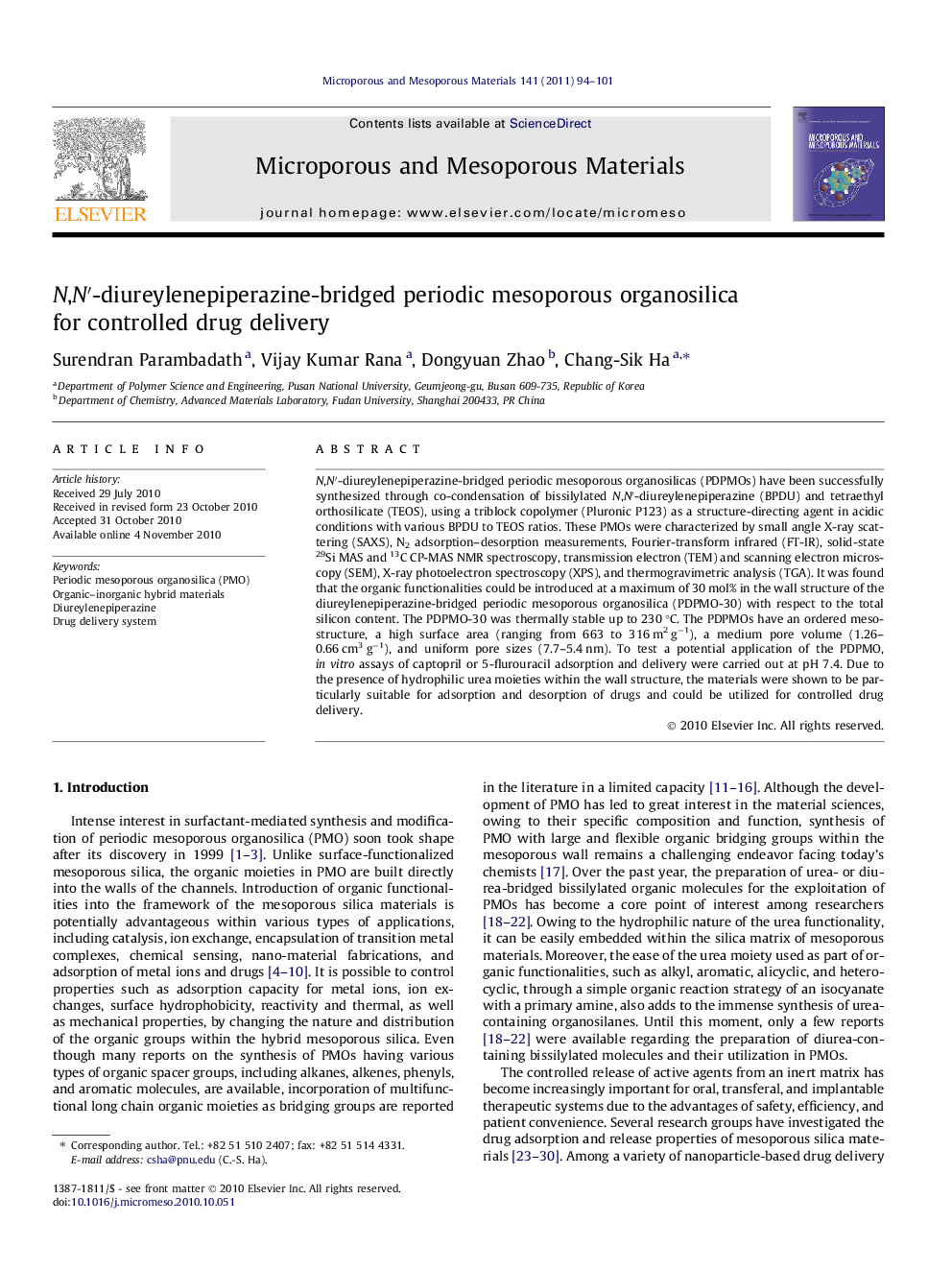| Article ID | Journal | Published Year | Pages | File Type |
|---|---|---|---|---|
| 75428 | Microporous and Mesoporous Materials | 2011 | 8 Pages |
N,N′-diureylenepiperazine-bridged periodic mesoporous organosilicas (PDPMOs) have been successfully synthesized through co-condensation of bissilylated N,N′-diureylenepiperazine (BPDU) and tetraethyl orthosilicate (TEOS), using a triblock copolymer (Pluronic P123) as a structure-directing agent in acidic conditions with various BPDU to TEOS ratios. These PMOs were characterized by small angle X-ray scattering (SAXS), N2 adsorption–desorption measurements, Fourier-transform infrared (FT-IR), solid-state 29Si MAS and 13C CP-MAS NMR spectroscopy, transmission electron (TEM) and scanning electron microscopy (SEM), X-ray photoelectron spectroscopy (XPS), and thermogravimetric analysis (TGA). It was found that the organic functionalities could be introduced at a maximum of 30 mol% in the wall structure of the diureylenepiperazine-bridged periodic mesoporous organosilica (PDPMO-30) with respect to the total silicon content. The PDPMO-30 was thermally stable up to 230 °C. The PDPMOs have an ordered mesostructure, a high surface area (ranging from 663 to 316 m2 g−1), a medium pore volume (1.26–0.66 cm3 g−1), and uniform pore sizes (7.7–5.4 nm). To test a potential application of the PDPMO, in vitro assays of captopril or 5-flurouracil adsorption and delivery were carried out at pH 7.4. Due to the presence of hydrophilic urea moieties within the wall structure, the materials were shown to be particularly suitable for adsorption and desorption of drugs and could be utilized for controlled drug delivery.
Graphical abstractN,N’-Diureylenepiperazine-bridged periodic mesoporous organosilicas (PDPMOs) have been successfully synthesized through co-condensation of bissilylated N,N’-diureylenepiperazine (BPDU) and tetraethyl orthosilicate (TEOS), using a triblock copolymer (Pluronic P123) as a structure-directing agent in acidic conditions with various BPDU to TEOS ratios. The materials could be utilized for controlled drug delivery.Figure optionsDownload full-size imageDownload as PowerPoint slideResearch highlights► N,N’-Diureylenepiperazine-bridged periodic mesoporous organosilicas (PDPMOs) have been newly synthesized for controlled drug delivery. ► The PDPMOs have an ordered mesostructure, a high surface area (ranging from 663 to 316 m2g−1), a medium pore volume (1.26–0.66 cm3g−1), and uniform pore sizes (7.7–5.4 nm). ► Due to the presence of hydrophilic urea moieties within the pore wall, the materials were shown to be particularly suitable for adsorption and desorption of drugs and could be utilized for controlled drug delivery.
